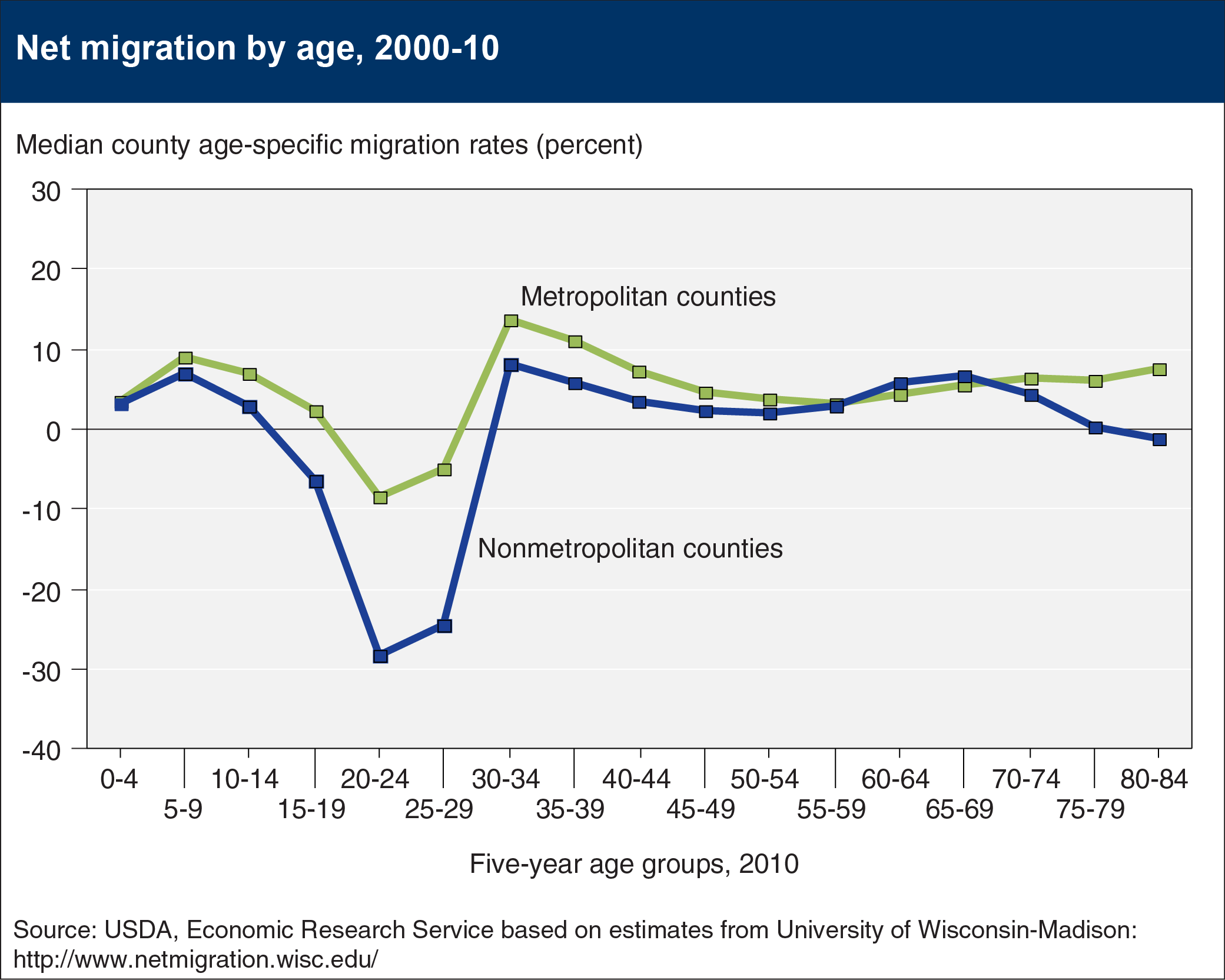Return migration among young families partially offsets rural population loss
- by John Cromartie
- 6/8/2015

Rural population loss is generally characterized as young people leaving. A typical nonmetropolitan county (based on the 50th percentile, or median, statistic) lost 28 percent of their 20-24 year olds to net out-migration during 2000-10, compared to just an 8-percent decline in the typical metropolitan county. However, stemming rural population loss may depend less on retaining young adults after high school than on attracting them back as they settle down to start careers and raise children. Median net migration rates in nonmetropolitan counties are highest among adults 30-34 and children 5-9. Interviews with rural return migrants showed that most came home with spouses and brought young children with them or soon started families. Conversations about returning centered on the value of family connections for child-raising in a small town environment. Return migrants described other aspects of home that bolstered their decision to move back, including schools with smaller class sizes, access to outdoor recreation, and shorter trips for work and shopping. This chart is found in the ERS report, Factors Affecting Former Residents' Returning to Rural Communities, ERR-185, May 2015.

